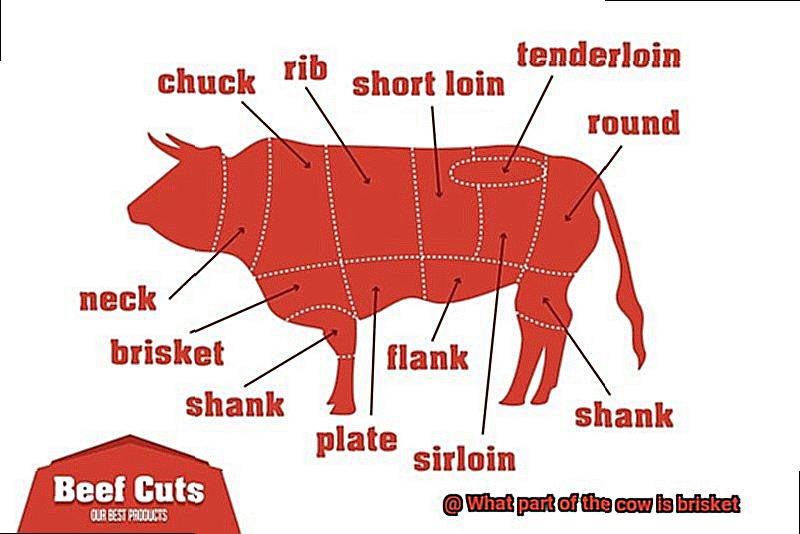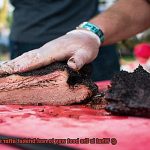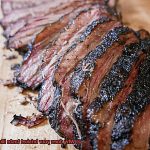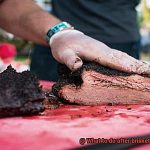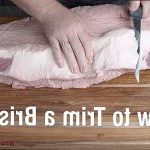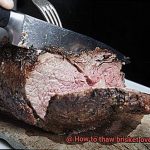Have you ever found yourself salivating over a plate of brisket, but unsure of its origin on the cow? Well, today we’re diving into the juicy world of brisket and uncovering its delicious secrets.
Brisket has become a staple in many cuisines around the globe for good reason. This cut is known for its mouthwateringly tender and flavorful taste that’s sure to satisfy any carnivorous craving.
From classic American barbecue dishes to Texas-style chili and Jewish corned beef and pastrami, brisket has won hearts (and stomachs) across cultures. But what exactly is brisket?
The cut comes from the lower chest area of the cow, nestled between the forelegs. This region is home to connective tissue that gives the meat its unique texture and flavor profile.
While it may be tougher than other cuts, when cooked correctly, brisket becomes incredibly succulent and tender – making it one of the most sought-after cuts on any menu. So next time you’re indulging in a delectable dish of brisket, you’ll know exactly where it came from on the cow.
Keep an eye out for more meaty tidbits and tips as we explore the world of carnivorous delights together.
Contents
Different Parts of the Cow and Where Brisket is Located
As a self-proclaimed meat enthusiast, it’s important to know where the different parts of a cow come from to truly appreciate the delicious cuts of meat that we enjoy.
If you’re wondering where brisket comes from, then look no further. Brisket is a tough and flavorful cut of beef that comes from the lower chest or breastbone area of the cow.
Due to its constant use in supporting the cow’s weight and movement, it can be tough if not cooked properly. But fear not, because when cooked low and slow, it becomes an incredibly tender and juicy piece of meat.
To locate the brisket on a cow, visualize the front half. The brisket is located on the underside, just behind the forelegs, and extends up to the breastbone.
It’s actually not a specific muscle but rather a combination of several muscles that work together to support the cow’s weight and movements. It’s important to note that there are two parts to a brisket – the flat and the point.
The flat is a leaner cut, while the point has more fat and is often used for making burnt ends. Each part requires different cooking techniques, so it’s important to do your research before getting started.
Did you know that brisket is used in cuisines all around the world? In Jewish cuisine, it’s often used for making corned beef or braised dishes.
In Korean cuisine, it’s a popular cut for grilling or making soups and stews. In Mexican cuisine, it’s used for making barbacoa.
Brisket truly is a versatile cut of meat. In conclusion, understanding where brisket comes from on a cow allows you to fully appreciate this delicious cut of beef.
It’s located on the underside between the forelegs and above the shank, and is made up of several muscles that work together to support the cow’s weight and movement.
Brisket Around the World
Brisket, the flavorful cut of beef, has captured hearts and taste buds all over the world. Each culture has its own unique way of preparing and serving this delicious meat.
Let’s embark on a journey to explore some of the most popular brisket dishes from around the world. In the United States, brisket is slow-cooked and smoked to perfection.
The smoky aroma and juicy tenderness make it a favorite among meat lovers. It’s often the star of barbecues and outdoor gatherings, where it’s served alongside classic sides like coleslaw and baked beans.
In South America, brisket is known as “pecho” or “asado de tira” and is typically grilled or roasted over an open flame. The meat is seasoned with herbs and spices before being cooked to perfection.
It’s often served with chimichurri sauce, a tangy blend of herbs, garlic, and vinegar that perfectly complements the rich flavors of the meat. In the Middle East, brisket is known as “laham mishwee,” and it’s slow-roasted in a clay oven or over an open fire after being seasoned with spices such as cumin, coriander, and paprika.
The result is a succulent and spicy dish that pairs perfectly with rice or flatbread. In Europe, brisket is often used to make corned beef or pastrami.
Corned beef involves curing the brisket in a brine solution for several days before cooking it slowly until it’s tender. Pastrami involves coating the brisket with a spice rub before smoking it for several hours.
The result is a flavorful and tender meat that can be enjoyed in sandwiches or as a main dish. In Asia, brisket takes on an entirely different flavor profile.
It’s often used in stir-fry dishes or slow-cooked in soups and stews. The tender meat absorbs the flavors of the spices and sauces used in these dishes, resulting in a rich and flavorful meal.
Whether it’s slow-smoked barbecue or spicy Middle Eastern roast beef, this versatile cut of meat satisfies all taste buds.
How Many Briskets Come from a Cow?
Well, the answer is not a straightforward one, as several factors come into play.
Let’s dive deeper into these factors and how they can affect the number of briskets that can be derived from one cow. One of the most significant factors that determine the number of briskets produced is the size of the cow.
A larger cow generally produces more meat, which means more briskets can be obtained. However, larger cows also tend to have tougher meat, making it harder to get a good cut of brisket.
On the other hand, smaller cows may only yield one or two briskets. Another factor is the quality and demand for other cuts of meat.
Some parts of the cow are more tender and flavorful than others, making them more desirable for other cuts such as steak or roast. This high demand for other cuts may mean fewer cuts of brisket available from a single cow.
Lastly, the skill level of the butcher plays an important role when it comes to maximizing the number of briskets that can be obtained from one cow. An experienced butcher can make precise cuts that reduce waste and increase the amount of meat available for brisket.
However, an inexperienced butcher may produce lower-quality cuts, resulting in fewer briskets overall. On average, a whole cow can yield anywhere from one to four briskets.
However, this number is subject to variation due to the above factors. For instance, a larger cow may yield four briskets while a smaller one may only produce one or two.
For high-quality brisket, it’s crucial to go to an experienced butcher who knows how to get the most out of each animal.
Other Cuts of Beef from the Cow
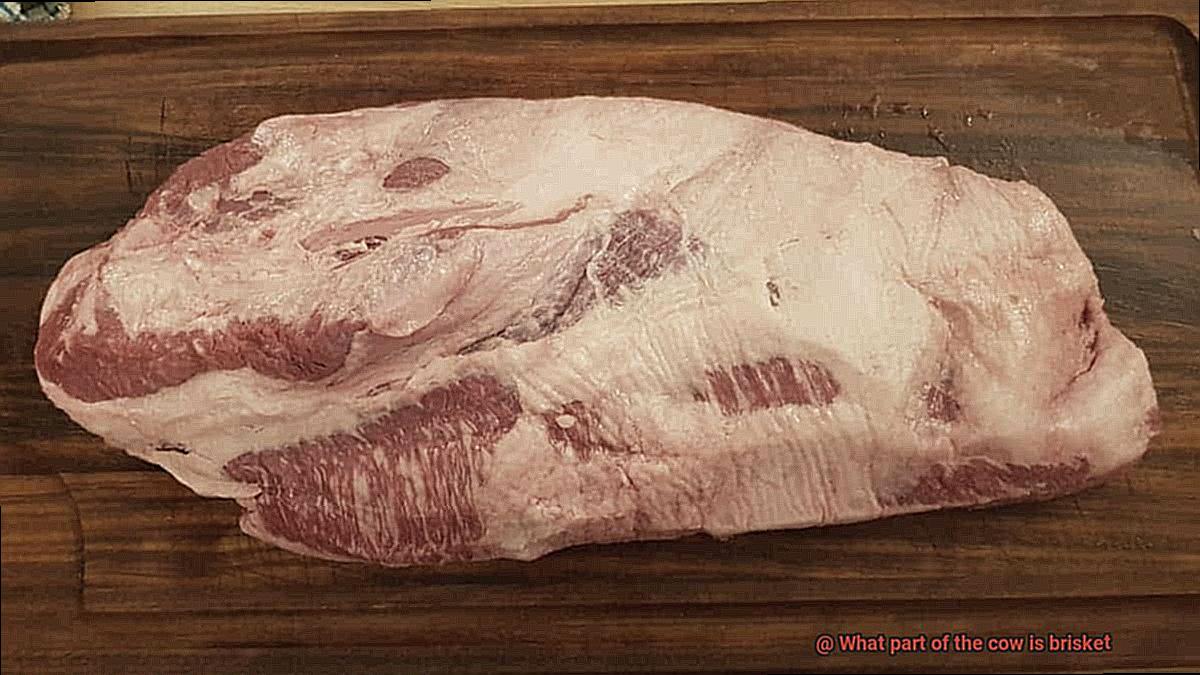
As a true beef aficionado, I have delved deep into the world of beef cuts and discovered some lesser-known gems that are worth exploring beyond the standard filet mignon, ribeye, and brisket.
Each cut has its own distinct flavor, texture, and cooking method that can transform your beef experience into something truly special. Let’s start with the skirt steak – a cut that’s been gaining popularity for good reason.
The skirt steak comes from the plate section of the cow and boasts a rich, beefy flavor that packs a punch. Its coarse texture makes it ideal for quick cooking methods such as grilling or searing in a hot skillet.
For maximum tenderness, serve it thinly sliced against the grain. If you’re in the mood for a hearty, slow-cooked meal, look no further than the chuck roast.
Taken from the shoulder section of the cow, this cut becomes tender and juicy when cooked low and slow through braising or pot roasting. Its rich beefy flavor will make your taste buds sing with delight.
For those seeking a leaner option without sacrificing flavor, consider the sirloin tip steak. Found in the hindquarter of the cow, this cut delivers a mild yet delicious taste that can hold its own without being overpowered by sauces or marinades.
Cook it quickly at high heat or slow-cook it to achieve maximum tenderness. Last but not least, let’s talk about flank steak.
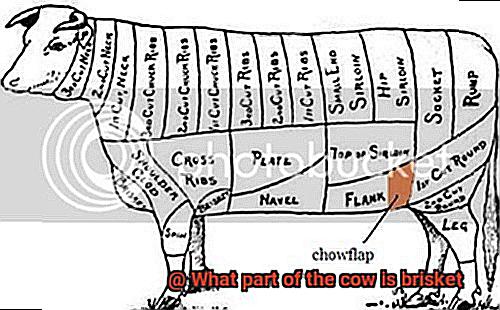
This cut comes from the abdominal muscles of the cow and boasts a bold, beefy flavor that pairs perfectly with marinades or rubs. Its long, grainy texture makes it ideal for quick cooking methods such as grilling or searing in a hot skillet.
Preparing and Cooking Brisket
Brisket – the champion of slow-cooking meats, the perfect centerpiece for any barbecue or family gathering.
But how do you prepare and cook this tough but delicious cut of beef to perfection? Fear not, my friends, for I am here to guide you through the art of brisket preparation and cooking.
First off, let’s talk about what makes brisket so great. This meat comes from the breast or lower chest of the cow and is packed with connective tissue and fat, making it perfect for slow-cooking methods like smoking or braising.
But before you start cooking, you need to prepare your brisket properly. Begin by trimming off any excess fat or silver skin on the surface of the meat.
This will allow your spices and rubs to penetrate the meat better and ensure even cooking. Then, season your brisket with a dry rub or marinade of your choice.
Whether you prefer classic Texas-style flavors like salt, pepper, and garlic powder or more unique blends like cumin or chili powder, make sure to rub the seasoning into the meat and let it soak up all those delicious flavors in the fridge for at least an hour. Now it’s time to cook.
You have two options: smoking or braising. Smoking involves slow-cooking the meat over wood chips for several hours until it’s tender and juicy.
Braising means cooking the beef in liquid like beef broth or beer, which helps break down the tough fibers and infuses it with flavor. Regardless of which method you choose, be prepared to cook your brisket for several hours at a low temperature.
This will give the connective tissue time to break down and make your meat tender as can be. Use a meat thermometer to monitor its internal temperature as it cooks and pull it off the heat when it reaches around 195-205°F.
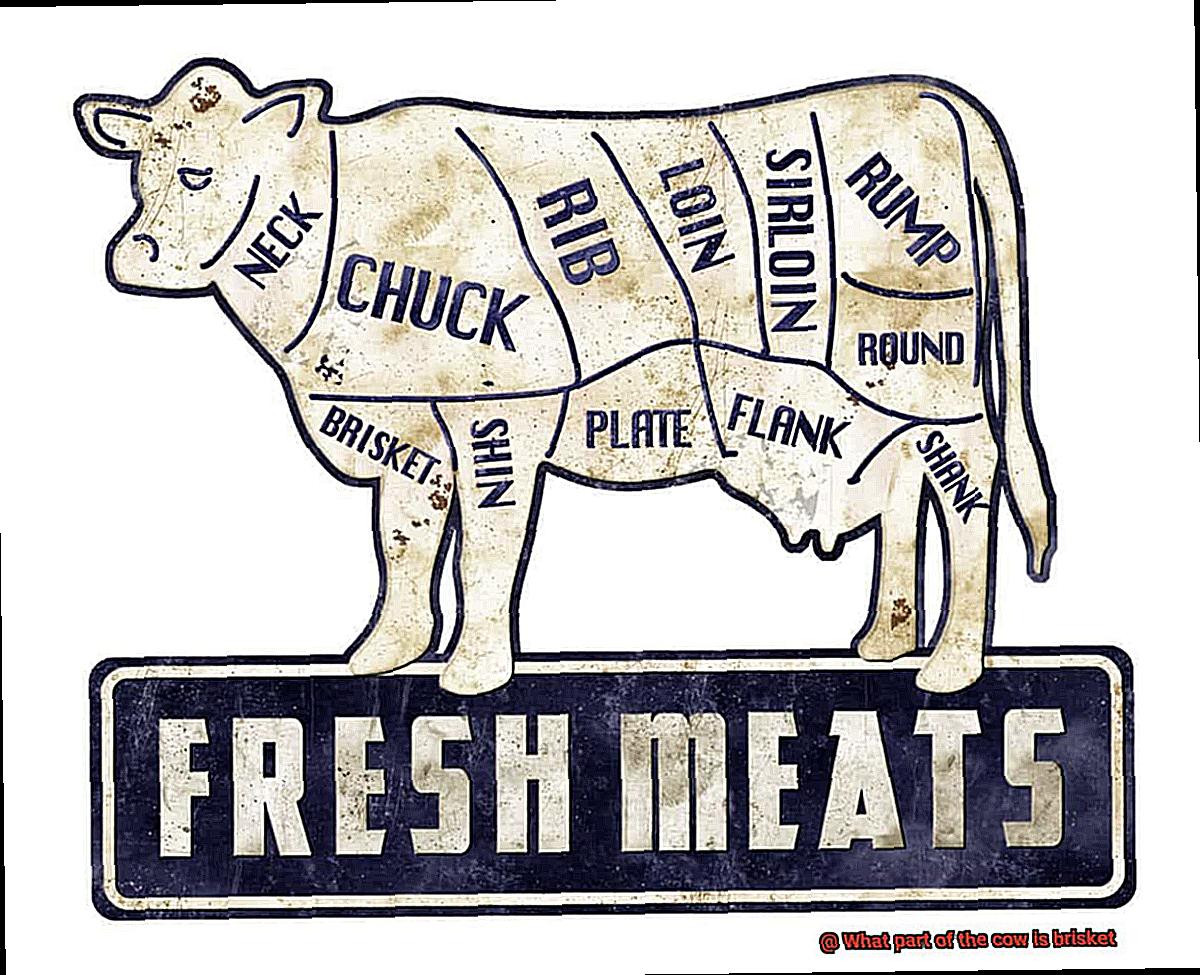
And now for the best part – slicing and serving. Let your brisket rest for at least 30 minutes before slicing it against the grain.
This will keep your meat juicy and prevent it from becoming too tough. Pair it with classic Southern sides like baked beans, coleslaw, or cornbread for a complete meal that’s sure to impress.
Preparing and cooking brisket takes time and effort, but trust me when I say that it’s worth every minute spent. With practice and patience, you can create a deliciously tender brisket that will have everyone coming back for seconds.
Tips for Tender, Delicious Brisket
With the right tips and tricks, you can turn this challenging cut of meat into a mouthwatering delight that will have your taste buds singing. In this article, we’ll cover seven expert tips for making tender and delicious brisket that will impress even the most discerning foodies.
Choose the Right Brisket
The first step to making a tender brisket is selecting the right cut. Look for a brisket with good marbling and a thick fat cap. This will help keep the meat moist and tender during cooking. A good rule of thumb is to choose a brisket that weighs between 10-12 pounds.
Trim Excess Fat
While fat is crucial for flavor and moisture, too much can result in greasy meat. Trim any excess fat that is more than ¼ inch thick before cooking to ensure the perfect balance of flavor and texture.
Season Generously
Brisket can handle bold flavors, so don’t be afraid to season it generously with your favorite spices and herbs. A simple rub of salt, pepper, garlic, and paprika is a great starting point. Experiment with different spice combinations to find your perfect match.
Cook Low and Slow
Brisket needs to be cooked low and slow to break down the tough connective tissue. Plan for at least 1 hour per pound of meat at a temperature between 225-250°F. This slow cooking process allows the flavors to penetrate the meat while creating tender, juicy results.
Wrap in Foil or Butcher Paper
After several hours of cooking, wrap the brisket in foil or butcher paper to prevent it from drying out. This technique, known as the Texas Crutch, can help lock in moisture and create an even cook throughout the meat.
Rest After Cooking
Let the brisket rest for at least 30 minutes after cooking to allow the juices to redistribute throughout the meat. This resting period ensures that every bite is packed with flavor and tenderness.
Slice Against the Grain
When ready to serve, slice the brisket against the grain to ensure maximum tenderness. The grain runs parallel to the muscle fibers, so cutting across them creates shorter fibers resulting in a more tender bite.
F-fWvTcph9U” >
Conclusion
To sum it up, brisket is a cut of beef that originates from the lower chest area of the cow.
It’s nestled between the forelegs and contains connective tissue that provides its signature texture and flavor. Although it may be tougher than other cuts, when cooked correctly, brisket becomes incredibly juicy and tender – making it a highly sought-after addition to any menu.
Brisket has become a staple in various cuisines worldwide. From classic American barbecue dishes to Texas-style chili and Jewish corned beef and pastrami, this cut of meat has made its way into the hearts (and stomachs) of foodies all over the globe.
It’s used in Korean cuisine for grilling or making soups and stews, in Mexican cuisine for barbacoa, and in Middle Eastern cuisine for slow-roasting after being seasoned with spices such as cumin, coriander, and paprika. Knowing where brisket comes from on a cow allows you to appreciate this delicious cut of beef fully.
It’s situated on the underside between the forelegs and above the shank – made up of several muscles that work together to support the cow’s weight and movement. To achieve a perfectly tender and flavorful brisket every time, proper preparation and cooking techniques are crucial.
Trim excess fat before seasoning generously; cook low and slow at a temperature between 225-250°F for at least 1 hour per pound of meat; wrap in foil or butcher paper after several hours of cooking to prevent drying out; rest for at least 30 minutes after cooking to allow juices to redistribute throughout the meat before slicing against the grain before serving.

